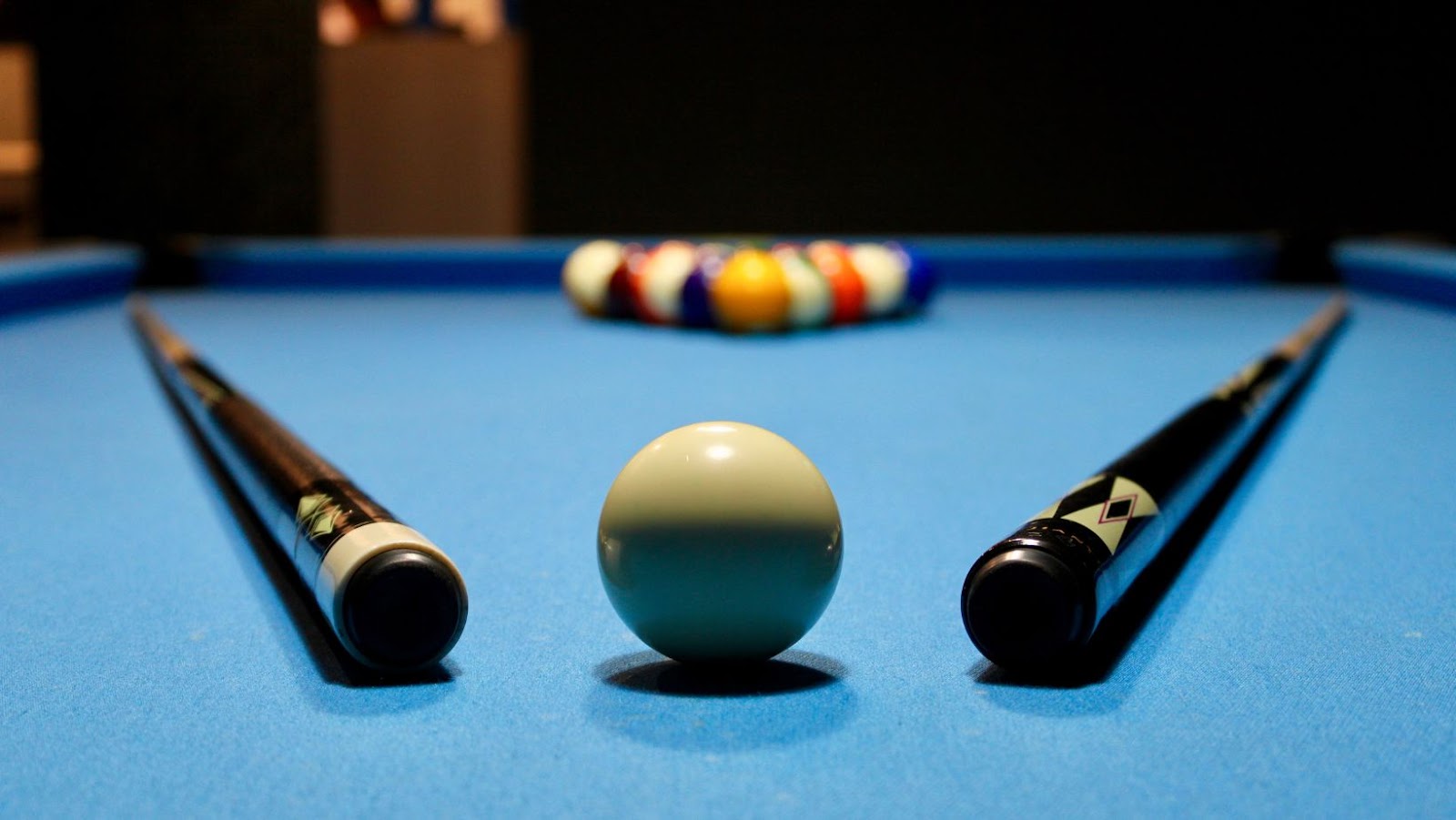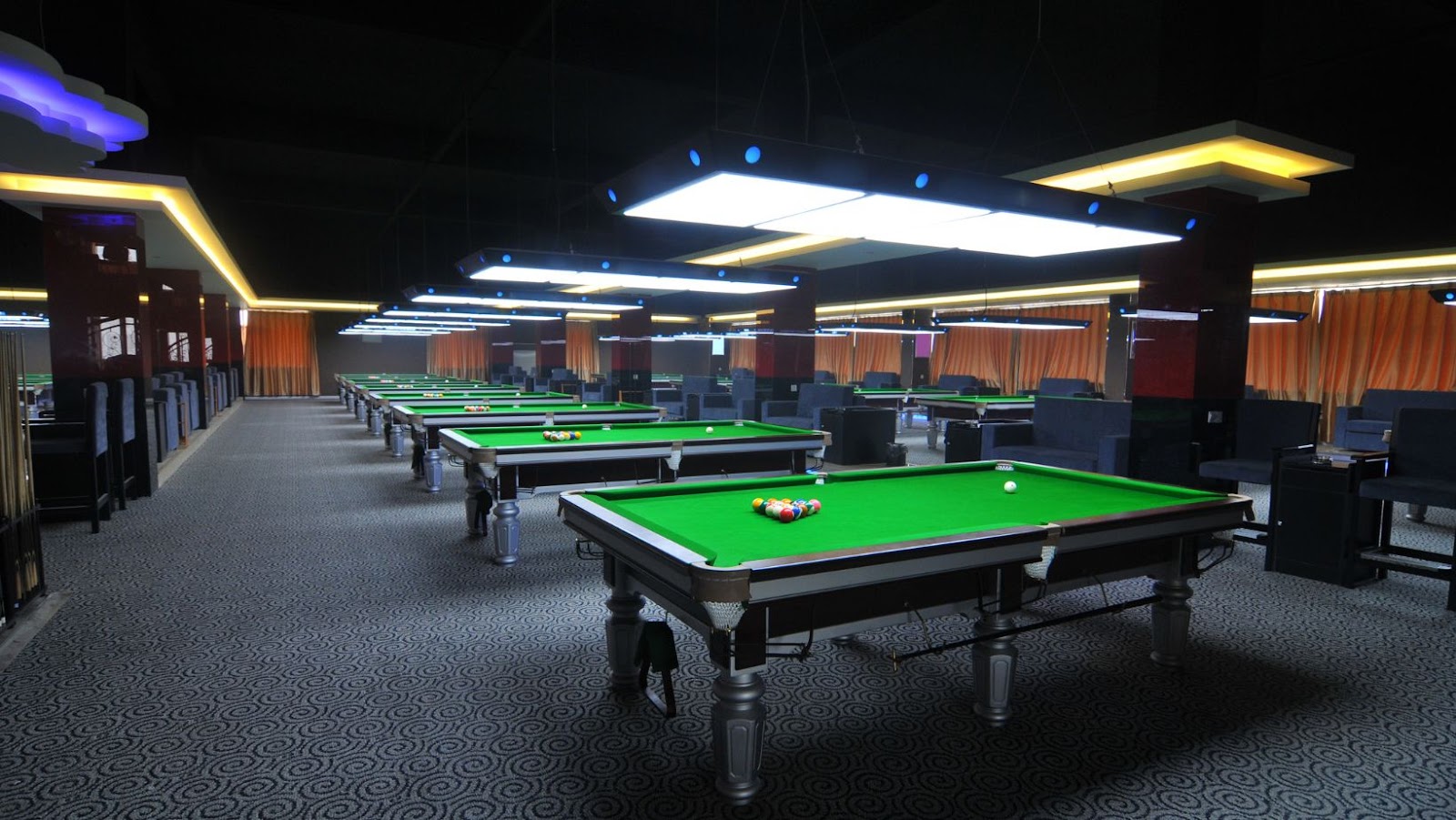Curious about snooker? You’re not alone! Being an increasingly popular sport, numerous people are drawn to the strategic and exciting game of snooker.
This article explores the basics and techniques of snooker, so you can feel confident joining in on the fun.
What is Snooker Game
Snooker is a cue sport that originated in India in the late 19th century. It has evolved into an increasingly popular game throughout the world, and today, it is primarily played by two players on a Snooker table. The game uses 22 balls-15 reds and six balls of different colors-that must be pocketed according to specific rules in order to win the game.
Snooker is quite complex, making it beneficial for players who understand the rules and strategies involved in the game. The main aim of snooker is to score more points than your opponent before all pockets are filled with the balls. Players take turns in striking a white cue ball with their cues (sticks) and attempting to achieve one of three goals:
1. Potting (pocketing) red or colored ball
2. Potting other color alternately
3. Forcing one’s opponent to commit a foul shot
The player or team that scores higher points at the end of each frame will win a frame, which leads to winning a match after scoring several successive frames. Points are awarded depending on how players pocketed their ball or whether they forced their opponent to commit a foul shot. Red Ball must always be hit first while potted while color ball should be hit only after red ball has been potted in relation to its value color depending shot chosen by each players during each frame play If any player commits a foul shot on his turn then he looses four points; this happens if he strikes any other ball before hitting Red Ball or when performing any defensive shots such as Re-spotting or Jump shots during each rack play by either player.
History of Snooker
Snooker is an indoor game of precision, skill and strategy. It is enjoyed by players the world over, from professional players competing in major tournaments to passionate amateurs who set up their own tables and challenge their friends to a game. The modern game of snooker dates back to the late 19th century, when it emerged as a combination of several different cue sports at English billiards halls.
The exact timing and origin of snooker are unknown, but most sources agree that the game was first developed in India by British Army officers during the late 1800s. The earliest evidence for snooker comes from 1875 when the rules of “Snookers Pool” were written down by acclaimed author Sir John Roberts. The name “Snooker” was subsequently adopted by these officers while they were stationed at Jabalpur in India, where they used it as slang for an inexperienced military recruit or a new arrival.

From then on, this novel form of pool quickly spread throughout the British Empire in its imperialist period and gained immense popularity amongst soldiers on their posts abroad. During this period in Great Britain, pubs became popular places for men to meet up and play games with one another – which accounts for why pubs are still some of the primary venues for snooker today! As disparate groups gathered together from all corners of Britain to play snooker, so new sets of rules were adapted to suit personal preference and local conditions – leading eventually to rule books like Hoyle’s Standard Rules from 1913 being created as a universal standardisation guide. These codified rules solidified snookers place within cultural history – leading eventually towards international competitions!
Rules and Regulations of Snooker
Snooker is a beloved British cue sport that is commonly played in league and tournament formats. The game is similar to American-style pool, with a few important differences. In snooker, each player has the objective of potting balls using their cue in the correct order to score points. The rules of snooker are the same for all professional formats, so whether you are playing this game at home or in an official tournament, you need to familiarize yourself with how it works.
The primary objective of snooker is for one player to pocket all 15 of their designated balls – seven reds worth 1 point each and six colors (yellow worth 2 points, green worth 3 points, brown worth 4 points, blue worth 5 points, pink worth 6 points and black worth 7 points). Players receive alternate turns until they successfully pot one of the colors or go out of bounds. Once a color has been potted, another red must enter into play before any other colors may be attempted.This cycle continues until all colors have been potted and the re-spotted black ball is legally potted. When breaking off, a minimum of four balls must hit a cushion otherwise it will count as a foul stroke and no point will be awarded. Additionally all balls must remain on the table whenever it’s your turn otherwise it’s considered to be an illegal stroke.
Fouls include: stroking both sides of your cue simultaneously; touching any ball on the table except when making an intentional pot; all missed pots; not having at least one cushion struck after delivering a break shot; using any object other than your own hand or cue to move or touch any ball on the table;If more than two consecutive fouls are committed by either player then that player’s turn automatically ends regardless if anything has been scored before then. If both players foul consecutively then simply nothing happens but if either fail again then their turn gets forfeited automatically without anything being potted from them or their opponent i.e no penalty applies just simply wait until they can try again next time.
Equipment Needed for Playing Snooker
Snooker is a cue sport that requires players to use skills such as strategy, observation, skill and precision to succeed. To play snooker, players need certain equipment: a snooker table, snooker cues and snooker balls.
The snooker table is the playing surface on which the game is played. Snooker tables are rectangular with six pockets situated at each corner and in the middle of each long side of the table. The cushions of the table are covered in green cloth which closely resembles grass, resulting in its other name “the green baize”.
A snooker cue is used by the player to strike the balls. It typically consists of a wooden stick with an arched leather tip that allows for better accuracy during play. Snooker cues come in various lengths so that players can find one suitable for their physique; there are also mini cues available that can be used by children.
Snooker balls come in 3 different colors – yellow (yellowish-brown), brown (reddish-brown) and green (dark olive). There are also 15 red balls which must be pocketed first before any colored balls are potted; these red balls cannot be substituted when playing a stroke. The final ball is known as a black ball, which will decide who wins or loses the game; it cannot be pocketed until all other red and color balls have been cleared from the table.
Techniques and Strategies for Playing Snooker
Snooker is a precision based game that requires a lot of skill and knowledge to excel at. In order to master this complex game, there are some basic techniques and strategies discussed below that players must learn in order to be successful.
One of the most important fundamentals of snooker is understanding what the half-ball lay off shot technique is. This technique involves placing the cue ball so it has an equal distance between itself and object balls, thus playing an effective safety that cannot be easily escaped from. The key when practicing this shot is to have a good, accurate stroke that will bring you all around the table.

The next technique and strategy addressed is controlling your break off shots by making sure you hit the pack correctly meaning that all 15 object balls move apart giving you plenty of different choices on where to play your following shots. It’s important when setting up these shots to keep in mind that each object ball will travel out from its spot depending on how hard it was hit which can give you different opportunities when placing your cue ball for the next shot.
On top of those two essential fundamentals of snooker there are other small strategic bits that can increase one’s effectiveness during their games, such as developing patterns when aiming for object balls or having different strategies in mind while playing safety shots depending on whether a player feels they have more chance of winning with a particular strategy then another despite what their opponents may do. Snooker requires top-level concentration at all times during a match so any tips needed should be kept in mind as such as not excessive talking or and limiting things like how much time it takes for you to set up for a certain shot or make certain decisions.
All these tips mentioned above should help players expedite their improvement rate allowing them ultimately become great players within this wonderful sport we call Snooker!
Professional and Amateur Snooker Tournaments
Professional and amateur snooker tournaments are held around the world. Professional events offer ranking points and prize money, while amateur tournaments may focus on individual challenges or group play. Snooker tournaments are an ideal way to test your skills against some of the best players in the world. The rules for snooker can vary from tournament to tournament, but all matches are based on a two-player game format.
In a professional or amateur tournament, players compete against each other over a specified number of frames (the number of frames can vary between 3 and 10 frames, depending on the tournament). A frame is played until one player has won by achieving a higher total score than their opponent after all the balls have been pocketed. At the end of each frame, the scores are compared; if both players have equal scores then it is known as a draw.
Players in professional and amateur snooker competitions must also obey all standard rules of play; this includes not touching any balls with their hands or cues, no defensive shot regulations as well as following all fouls regulations. Each match must also be refereed so that fouls may be properly marked and penalty points awarded accordingly to ensure fair play for all players involved.
Snooker is considered one of the most popular cue sports in many countries. Some major international competitions such as The World Snooker Championship attract large crowds due to the high level of playing and sportmanship from the participants. Professional snooker tournaments provide significant prestige for those fortunate enough to qualify for them; leading amateurs sometimes even reach world rankings due to their success at these competitions.
Snooker’s Popularity Around the World
Snooker is an extremely popular cue sport, played around the world in tournaments, pubs, and clubs. It is billed as the “gentleman’s game” and is thriving in many countries today.
Often referred to as the “gentleman’s game,” snooker has a long traditional history renowned for its sportsmanship and reward structure. It requires knowledge of rules and regulations and requires a high-level of skill to be successful. As more people have come into contact with the game, it began proliferating throughout Europe, North America, Australia, Japan and around the world.
Today snooker remains a popular pastime in Britain and Commonwealth countries such as Canada and Australia but it is also enjoyed by people from other countries such as China. Recently it has been gaining steady popularity in India too after Virat Kohli became its brand ambassador.
The game can be traced back all the way to 1875 when it first appeared in England at a billiards hall called The Barrier Road Club including such luminaries of Victorian society as Sir Winston Churchill’s father’s grandfather (Leonard Jerome). From there its core concepts spread throughout the country until by 1901 Snooker was being played professionally on an international level.
Benefits of Playing Snooker
Snooker is an exciting and challenging game with many benefits, including improved mental focus, hand-eye coordination, and enhanced problem-solving skills. Unlike many other games, snooker requires both strategic planning and visual alertness to be successful. The game’s slow pace allows for deep thought and calculation, which cultivates the patience needed for decision making in day-to-day life.
Here are some of the key benefits of playing snooker:
Mental Focus: Playing snooker sharpens players’ powers of concentration. Each shot is considered independently of any other as you plan how to set up your next ball on the table. Playing a full game can improve mental acuity far more than attempting to do a one-shot problem like a crossword or jigsaw puzzle.
Problem Solving: As the player attempts to make the best shot that allows them to close out an inning or frame with the highest possible score they are actively engaging in a highly satisfying problem solving task. This increases their ability to formulate strategies and accurately assess probabilities in everyday life too.
Hand Eye Coordination: Snookers players must precisely aim their shots using correct force, distance and angle using nothing but their own eyesight. By practising this skill over time, regular players will find they have greater coordination with any hand tool like scissors or knives or even when driving or manipulating objects around at home or work.. Additionally they will be able to measure distances more accurately allowing them better accuracy when making shots from farther away from the table’s edge.




No Comment! Be the first one.